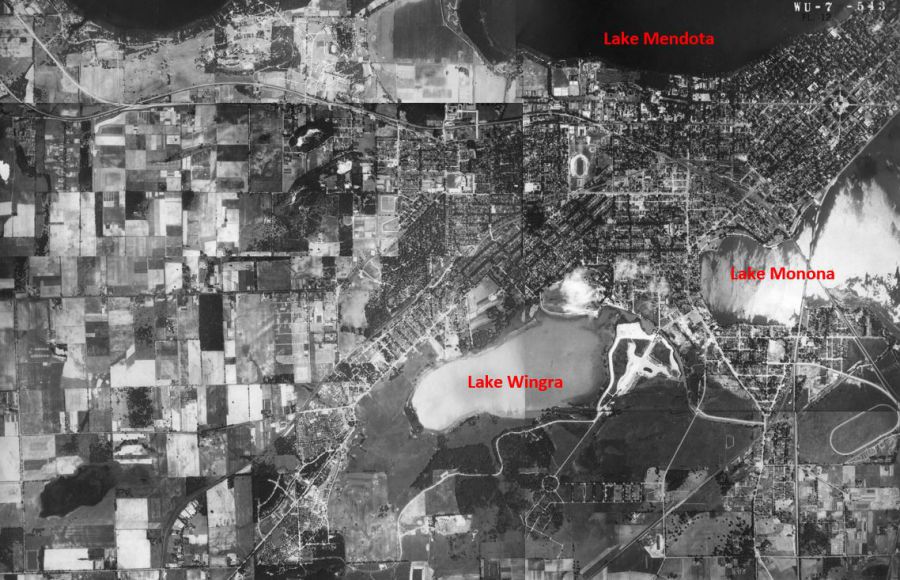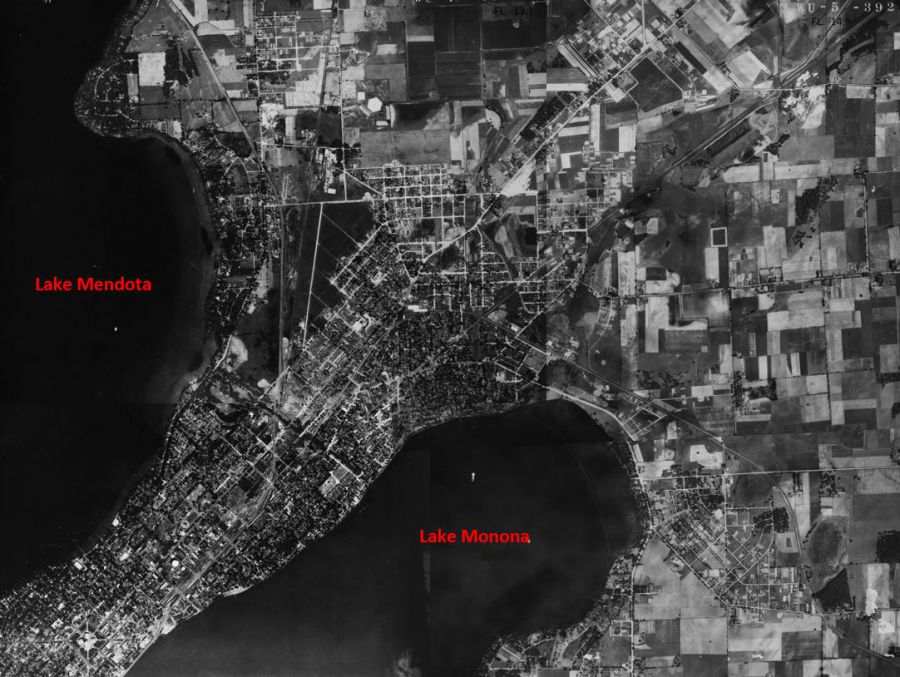Stormwater Drainage System
Need for a Drainage System
As watersheds become more urbanized, much of the vegetation is replaced by impervious surfaces, reducing the area where infiltration to ground water can occur. Thus, more stormwater runoff occurs. This runoff must be collected by the City’s drainage system to prevent flooding of private property.Additionally, Madison was built on low-laying wetlands east of the capitol in the East Washington Avenue corridor, in the Fordem Avenue railroad corridor, and along the rivers and lakes. As the City developed these wetlands were filled in but they continue to be low-lying regions. This makes flood prevention especially difficult in these areas, and requires significant stormwater infrastructure to move stormwater out of low-lying areas and into the lakes.


Ponds and greenways are part of a more than 2,000 acre drainage system of public and private land designed to slow the velocity of stormwater flow and promote infiltration of stormwater into the ground. These areas also provide a buffer that captures significant amounts of sediment, nutrients, and pollutants before they reach lakes and rivers. Connecting these features together is an intricate network of pipes that collect stormwater runoff from impervious surfaces, like roads, and convey it through the drainage system.
Pond and Greenway Tour
View a small sample of the wide range of stormwater ponds and greenways managed by the City of Madison Stormwater Utility.
Difference between a Park and a Greenway
Today’s distinction between park and greenway is a complex product of the historical development of Madison’s urban open spaces. The City’s definition of ponds and greenways, includes both properties owned by the Stormwater Utility, but can also include a pond or a greenway within a park property owned by the Parks Division.
Madison’s open space network did not develop with the distinct classifications that we use today such as “park”, “stormwater pond,” or “greenway.” Rather, Madison’s first park system began in 1892 as a series of privately funded scenic drives and spaces managed by the Madison Park and Pleasure Drive Association (MPPDA). This evolved into city-owned public spaces and a city parks division. However, the concept of separate public open spaces for stormwater versus parks was not a distinction made the formative years of Madison’s neighborhoods. During this time, occasionally land was dedicated for park purposes or for stormwater purposes, however often times properties were platted as “dedicated to the city for park and drainage” and maintenance of these properties was performed by a variety of city agencies.
It was not until the early 1990’s that the city began requiring separate land dedications for parkland versus stormwater drainage. This ushered in dividing ownership parcels based on their dedication and intended use as either park property or stormwater property. To address this muddled history, the City of Madison has made internal distinctions to classify these properties. This classification is based on primary function but often evaluates historical and cultural resources, agency roles and responsibilities.
This classification is not an either pond/greenway OR park. Internal mapping identifies ponds and greenways that exist within parks, as well as ponds and greenways that are owned entirely by the Stormwater Utility.
This mutually inclusive definition is codified in the Madison General Ordinance that states a greenway as “An open area of land included under the definition of "Parkways" (Sec. 16.24), the primary purpose of which is to carry storm water on the ground surface in lieu of an enclosed storm sewer. Greenways may serve multiple purposes including, in addition to their principal use for storm drainage, vehicular and/or pedestrian traffic, sanitary sewers, water mains, storm sewers, storm water retention basins, park development and other related uses.”
This definition does not exclude a greenway from being used for park purposes, but identifies that its primary purpose is to carry stormwater. Likewise, parks are also not exclusive, they are areas held open for recreational purposes but may include stormwater and other natural features.
The difference between a park and a greenway? Not always clear, but properties in the park inventory are typically considered parkland, and may occasionally have greenways or other stormwater features within them. Whereas properties with the underlying ownership of City of Madison Engineering, are almost exclusively considered ponds or greenways.

To find out more about Madison’s stormwater drainage system, check out these topics:
Greenways
Ponds
Hidden Infrastructure
Shorelines
Vegetation Maintenance
Private Use, Dumping, and Encroachments
Reconstruction
